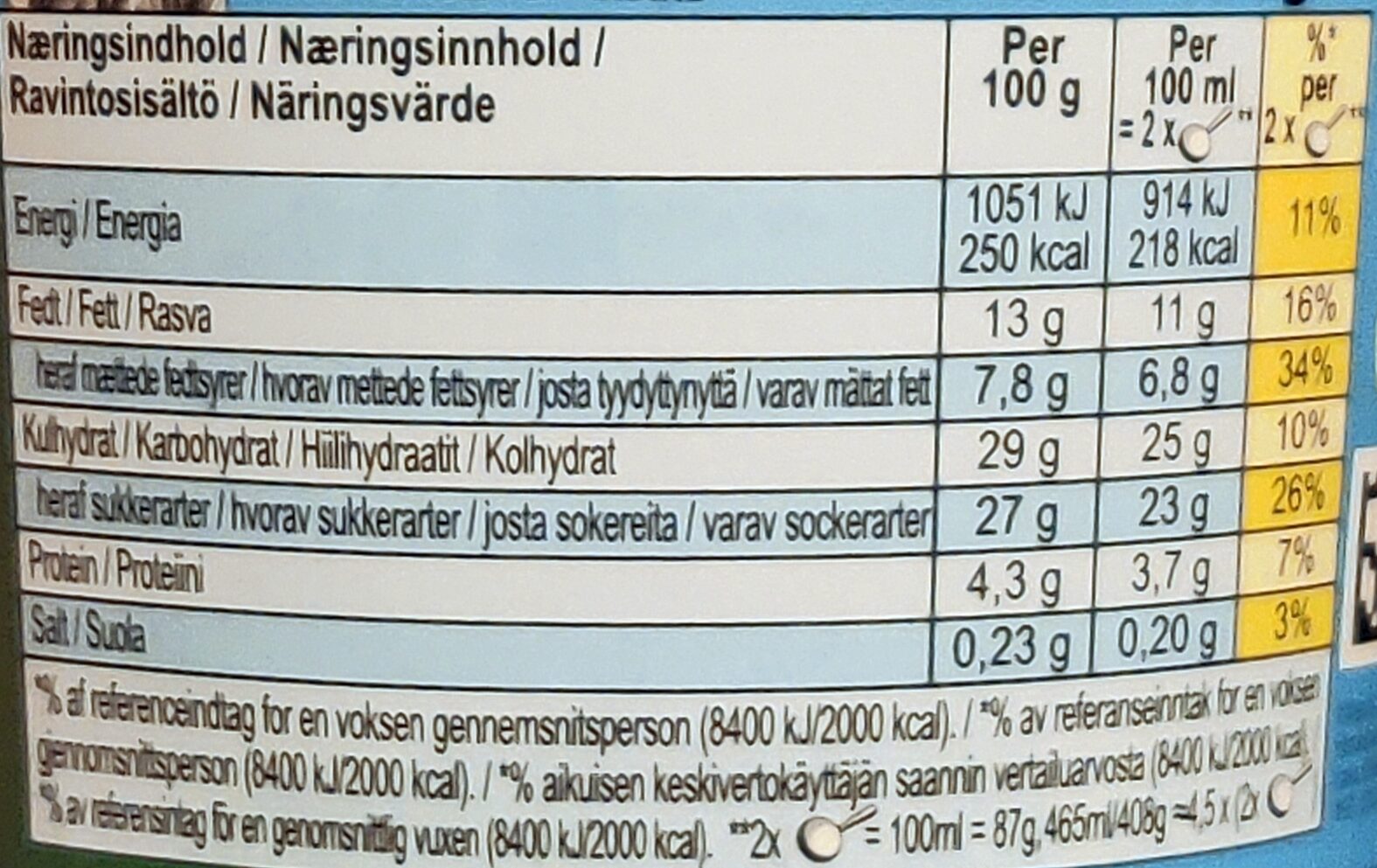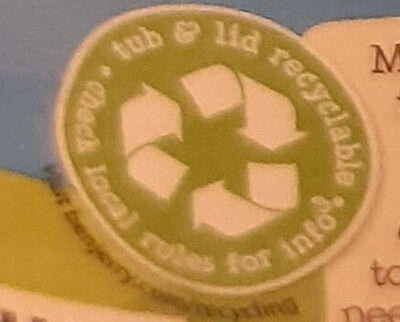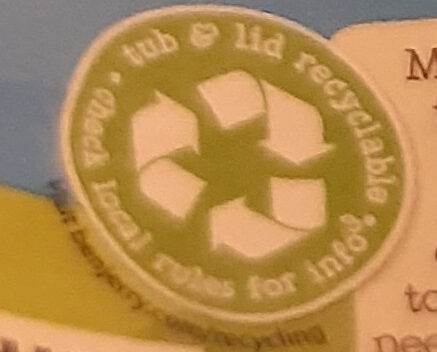Chocolate Fudge Brownie - Ben & Jerry's - 408 g
Algunes de les dades d’aquest producte les ha proporcionat directament el fabricant Unilever France.
Codi de barres: 8711327370708 (EAN / EAN-13)
Nom comú: Schokoladen-Eiscreme mit Schokogebäckstücken (12%)
Quantitat: 408 g
Empaquetament:
en:Card-lid, en:Card-tub, en:Couvercle carton, en:Film plastique, en:Green Dot, en:Pot carton
Marques: Ben & Jerry's
Categories: Postres, Aliments congelats, Postres congelats, Sorbets i gelats, Gelat, Terrines de gelat, en:Chocolate ice cream tubs, en:Luxury ice cream in a cup, en:Congelados, en:Helado, en:Helados y sorbetes, en:Postres, en:Postres helados, en:Tarrinas y bloques de helado, en:Tarrinas y bloques de helado de chocolate
Etiquetes, certificacions, premis:
Comerç Just, Fairtrade Internacional, Halal, Kosher, Triman, de:Comercio justo, de:Point Vert, de:Punto Verde, de:Vegetariano


Origen dels ingredients: el:free range eggs
Llocs de fabricació o processament: Netherlands
Botigues: Coop, carrefour.fr
Països on es va vendre: Àustria, França, Alemanya, Espanya, Suècia, Suïssa
Matching with your preferences
Altres dades
Preparació: Pour une dégustation encore plus onctueuse de votre crème glacée, sortez-le quelques minutes avant de servir.
Condicions de conservació: À conserver entre -25°C et -18°C
Servei al client: Ben & Jerry's Relation Consommateurs, Unilever France, 20 rue des Deux Gares 92842 Rueil-Malmaison Cedex
Report a problem
Fonts de dades
El fabricant Unilever France utilitza Equadis per transmetre automàticament dades i fotos dels seus productes.
Producte afegit per kiliweb
Última modificació de la pàgina del producte per org-unilever-france-gms.
La pàgina del producte, també editada per akitainu, annelotte, date-limite-app, driveoff, duhowpi, ecoscore-impact-estimator, ethic-advisor, ethic-advisor.49583a77-1928-4de0-9e1f-53d762f47c8c, foodless, foodvisor, halal-app-chakib, inf, machaterate, maxauro, mogli, openfoodfacts-contributors, packbot, prepperapp, professordoc, scanbot, smoothie-app, spotter, swipe-studio, thaialagata, torredibabele, vaporous, vikalex, yuka.YTQ0d0MvUUIvY0VZdDhVMTNnejUxTU10MW9DVUJEeXBKN0ZKSVE9PQ, yuka.sY2b0xO6T85zoF3NwEKvlmlXWMX0sivOBRbQnEqK3tyhEoThUfxx7rj5Cas, yuni6.














